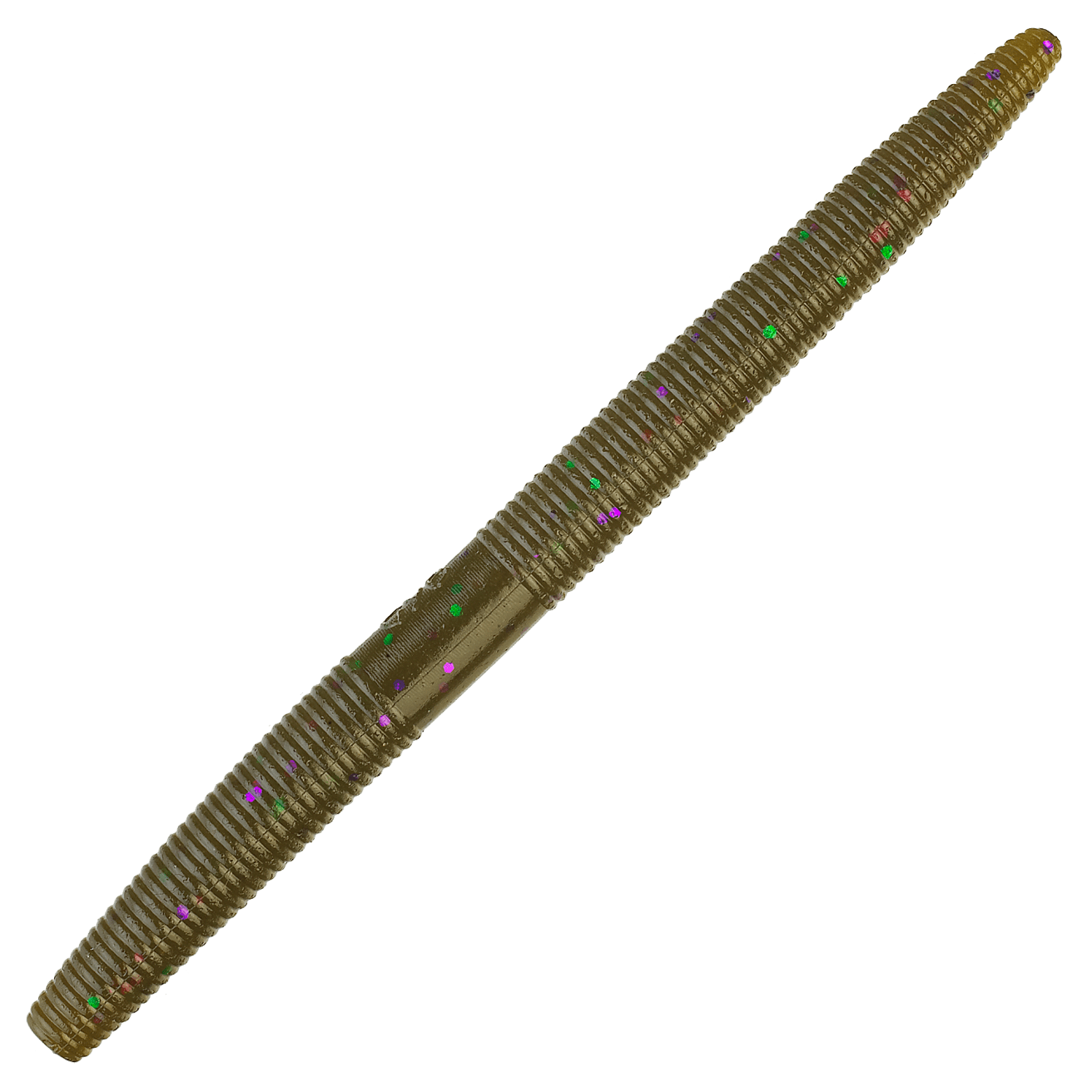Bass fishing with a fluke, a soft plastic jerkbait, is highly effective. Cast the fluke near cover, let it sink, and twitch the rod tip for lifelike movement. Vary retrieval speed and pauses to entice strikes from both largemouth and smallmouth bass.
Bass fishing with fluke is a popular angling technique for targeting largemouth and smallmouth bass. A fluke is a soft plastic bait that resembles a fleeing baitfish and is used to trigger a predatory response in the bass. The fluke is typically rigged on a jig head or weedless hook and can be fished in various presentations such as a slow retrieve, a twitch-pause retrieve, or a hop-and-drop presentation.
Bass fishing with fluke is especially effective during the warm months when bass are actively feeding on baitfish, but it can also produce results in cooler months when fished around structure and cover. Many anglers love this technique for its versatility, affordability, and ability to attract big bass.
Table of Contents
What is a Fluke
A fluke is a soft plastic lure commonly used for bass fishing. It is designed to mimic the appearance and movement of a fleeing baitfish, making it attractive to bass. Flukes can be rigged in various ways, such as on a jig head or weedless hook, allowing for different depths and actions in the water. This versatility makes the fluke a popular choice among anglers looking to mimic the prey of bass and trigger a predatory response.
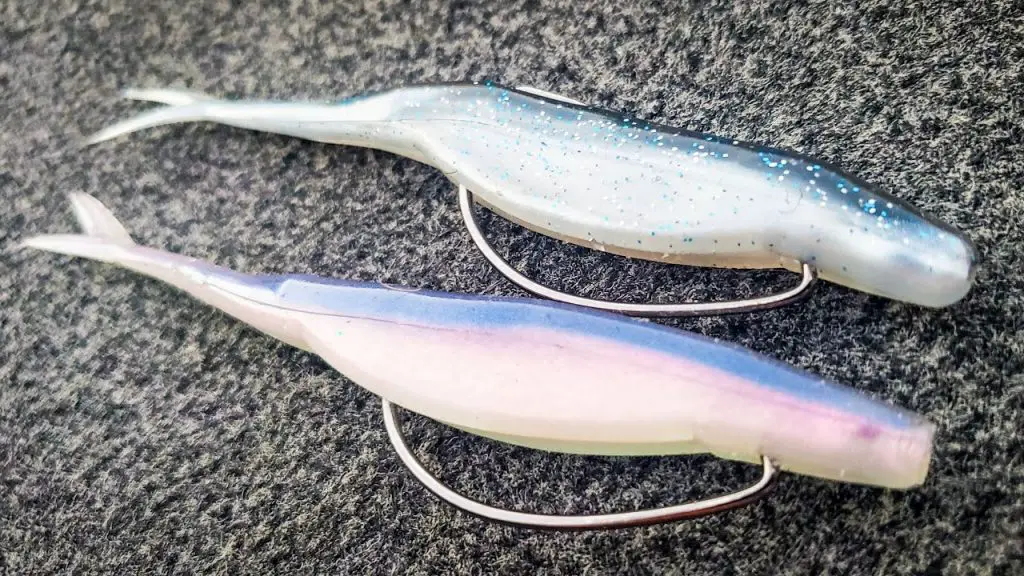
Selecting the right lure
Selecting the right color and size of fluke is important for bass fishing because it directly affects the success of the angler’s presentation. The color of the fluke should match the hatch, meaning it should resemble the natural color of the baitfish in the water. This makes the fluke more convincing and entices the bass to bite.
The most popular sizes and colors of fluke for bass are:
| Size | Color |
| 4-inch | Watermelon Seed (Green pumpkin with red or black) |
| 5-inch | Smoke Silver (Clear with a hint of silver glitter) |
| 6-inch | Junebug (Dark red or purple) |
These combinations are popular because they imitate a variety of different baitfish and can be effective in a variety of water conditions.
Choosing the right size
The size of the fluke influences the action and depth of the lure in the water. A smaller fluke will typically sink faster and produce a more subtle action, making it ideal for finesse presentations and clear water conditions. On the other hand, a larger fluke will sink slower and create a bigger profile, making it a good option for fishing in murky water or when the bass are feeding on larger baitfish.
Additionally, the size of the fluke also affects the weight and casting distance of the lure, making it important to select the right size based on the fishing conditions and the type of presentation desired. The size of the fluke should match the size of the baitfish in the water and be chosen based on the specific needs of the angler and fishing situation.

Selecting scent and color
The scent of the fluke can attract bass and trigger a predatory response, even in murky or off-colored water. By adding a scent to the fluke, the angler can make the lure more attractive to the fish and increase the chances of a bite.
The color of the fluke should match the hatch, meaning it should resemble the natural color of the baitfish in the water. This makes the fluke more convincing and entices the bass to bite. Different colors of flukes can be used to imitate different types of baitfish, making it important to choose the right color based on the type of fish and water conditions.
The scent and color of the fluke can greatly impact the success of the fishing trip and should be carefully considered by the angler.
The most popular scents for fluke lures are:
- Garlic
- Anise
- Shrimp
- Crawfish
- Minnow
- Worm
Matching the hatch
Matching the hatch of the natural baitfish can be achieved by selecting the correct size and color of the fluke lure for bass fishing. To match the hatch, the angler should observe the type of baitfish in the water and select a fluke that closely resembles its size and color. The fluke size should be proportional to the size of the baitfish, and the color should match the natural hue.
In clear water, natural colors such as silver, gold, or clear are often effective. In murky water, brighter colors such as chartreuse or fluorescent green can make the lure more visible. By carefully observing the water and selecting the right size and color of the fluke, anglers can effectively match the hatch and increase their chances of success.
The most common baitfish species that anglers should try to mimic when using a fluke lure for bass fishing are:
- Shiners
- Minnows
- Shad
- Crawfish
- Bluegill
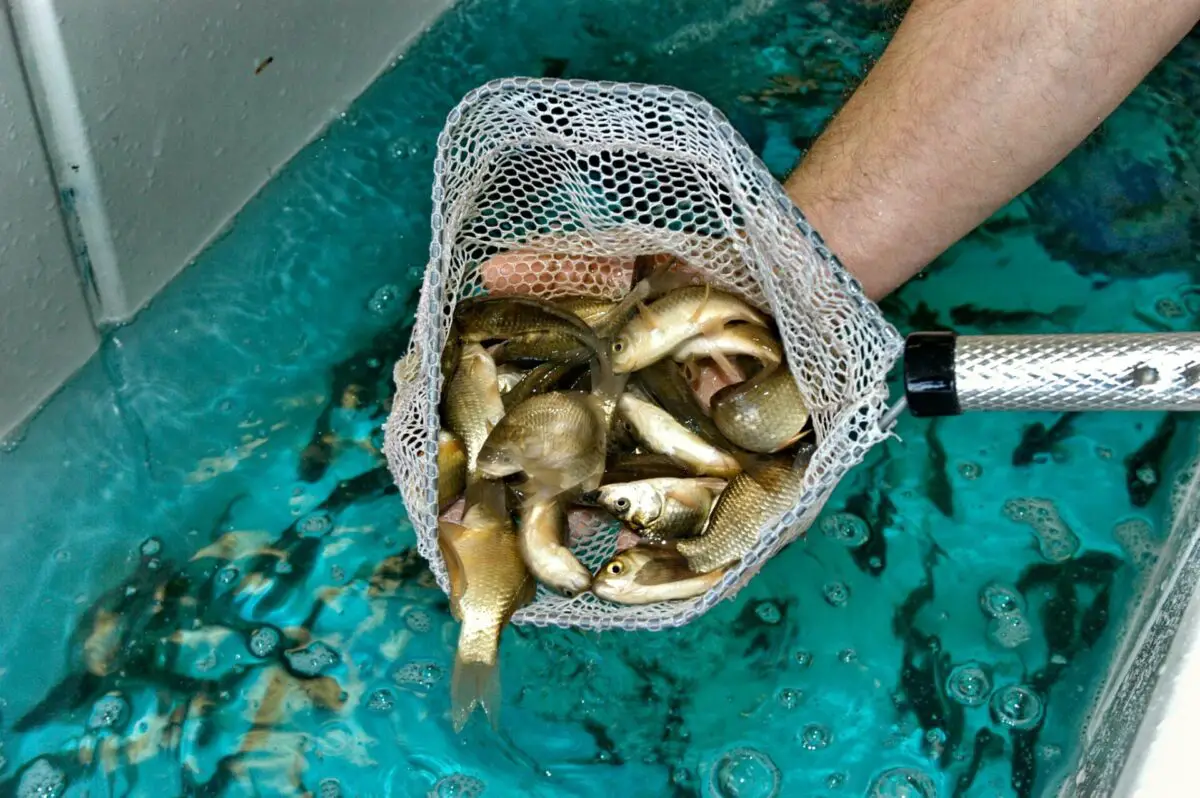
Advantages of using Fluke for Bass
Fluke lures have several advantages over alternative lures for bass fishing:
- Versatility: Flukes are versatile lures that can be rigged for different depths and actions, making them suitable for various fishing conditions and techniques.
- Natural appearance: They have a realistic appearance that closely resembles various baitfish, making them a convincing option for attracting bass.
- Durability: They are typically made of durable plastic that can withstand repeated casts and the force of large fish.
- Affordability: They are affordable compared to some other lures, making them a popular choice for anglers.
- Ease of use: They are simple to rig and fish, making them a great option for beginners and experienced anglers.
These advantages make flukes a popular choice for bass fishing and a versatile tool in any angler’s arsenal. They can be fished alone or combined with other lures and techniques to create a customized presentation tailored to the angler’s specific fishing conditions and needs.
Rigging the Fluke lure
Rigging a fluke for bass fishing can vary based on the specific fishing conditions and the angler’s preferred presentation, but here are the steps for a basic rig:
- Choose a hook: Select a hook that is appropriately sized for the fluke and the type of fish targeted.
- Attach the fluke: Slide the fluke onto the hook to cover the hook shank and hook point.
- Add weight: Depending on the desired depth, add a sinker or jighead to the hook to weigh the fluke and control its depth.
- Attach a leader: If fishing in clear water or for spooky fish, add a fluorocarbon leader to the line above the hook to provide a more subtle presentation.
- Add scent: To make the fluke more attractive to the fish, add a scent to the lure.
These are the basic steps for rigging a fluke for bass fishing, but the specific rig can vary based on the fishing conditions and the angler’s preferences. Different hooks, weights, and leaders can be used to create a customized presentation that is effective in the specific fishing situation.
The most common rigs for fluke lures are:
- Texas rig
- Carolina rig
- Wacky rig
- Drop shot rig
- Jig head rig
I have written a full guide to rigging a fluke for bass if you are looking for indepth instructions.
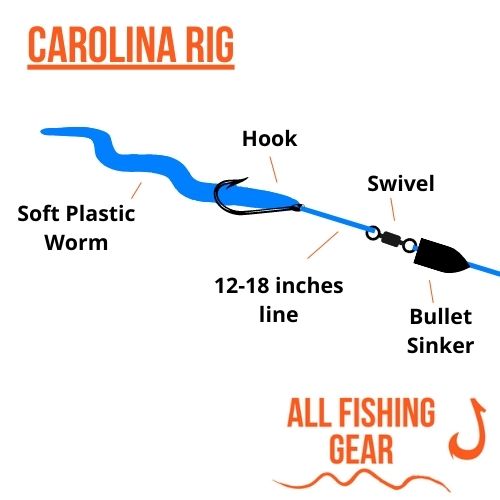

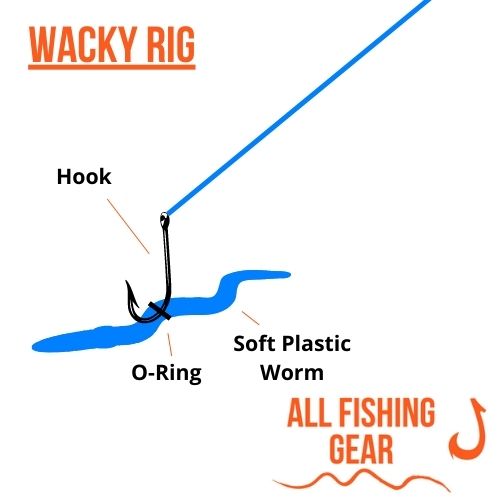

Hook placement
Changing the hook placement when rigging a fluke can help in several ways:
- Imitates different prey: By changing the hook placement, the fluke will have a different action and appearance, allowing it to imitate different types of prey, such as a crawfish or shad, for example.
- Creates a different action: Moving the hook from the nose to the tail of the fluke can change the way it swims, providing a different action and triggering a different response from the fish.
- Controls the depth: By changing the hook placement, the angler can control the fluke’s depth, allowing it to be fished at different levels in the water column.
- Adjusts for water conditions: It can also be used to adjust the rig for specific water conditions, such as fishing in weed beds or around structure, where the fluke needs to be fished at different depths to avoid snagging.
Adjusting rigging for different conditions
If fishing in deeper water, adding weight to the rig or increasing the length of the leader can help the fluke swim deeper.
If fishing in shallow water, reducing the weight or shortening the leader can keep the fluke closer to the surface.
If fishing in strong currents, adding weight to the rig can help keep the fluke in the desired location. If fishing in calm waters, reducing the weight can help the fluke swim more naturally.
If fishing around structure, such as rocks or weed beds, using a weedless rig or adding a weed guard to the hook can help prevent snagging.
Techniques for using Fluke lure
There are many different techniques for fishing with fluke lures that can imitate different types of prey and trigger a bite from the fish. From slow to fast retrieves, many techniques can be used to match the hatch and target specific species of fish.
| Technique | Situation | Effectiveness |
|---|---|---|
| Weightless Texas Rig | Shallow water, grass lines, and flats | ⭐⭐⭐⭐⭐ |
| Weighted Texas Rig | Deeper water or around submerged cover | ⭐⭐⭐⭐ |
| Wacky Rig | Clear water, high visibility | ⭐⭐⭐⭐ |
| Drop Shot | Suspended bass or around deep structure | ⭐⭐⭐⭐⭐ |
| Carolina Rig | Dragging along the bottom in deep water | ⭐⭐⭐⭐ |
| Twitch and Pause Retrieve | Stained or muddy water, aggressive bass | ⭐⭐⭐⭐⭐ |
| Skipped under docks/overhangs | Around docks, overhangs, and other structure | ⭐⭐⭐⭐⭐ |
Slow rolling
‘Slow rolling’ is a bass fishing technique that involves retrieving a lure, such as a fluke, at a very slow pace. The idea behind ‘slow rolling‘ ‘is to imitate a slow-moving baitfish or crawfish, triggering a predatory response from the bass. It is often used when fishing in deep water, when the fish are less active, or when the water is murky, making it difficult for the fish to see the lure.
To ‘slow roll’ a fluke, the angler casts the lure out and retrieves it slowly, allowing it to fall through the water column and pause, creating a subtle fluttering action that imitates a struggling baitfish. Slow rolling is a simple technique that can be very effective for catching bass, especially in tough fishing conditions or when the fish are particularly finicky.
Twitch and pause
‘Twitch and pause’ is a bass fishing technique that involves twitching the rod tip to create a quick, sharp action in the lure, followed by a pause. The idea behind ‘twitch and pause’ is to imitate a fleeing baitfish’s erratic, fleeing movements. It is often used when fishing in shallow water, when the fish are more active, or when the water is clear, making it easier for the fish to see the lure.
To perform the ‘twitch and pause’ technique, the angler twitches the rod tip to create a quick, sharp action in the lure, and then immediately pauses, allowing the lure to fall back to its original position.
Jump and pause
‘Jump and pause’ is a bass fishing technique that involves making the lure jump out of the water, followed by a pause. It imitates the fleeing movements of a frightened baitfish. ‘Jump and pause’ is often used when fishing in shallow water, when the fish are more active, or when the water is clear, making it easier for the fish to see the lure.
To perform the ‘jump and pause’ technique, the angler jerks the rod tip sharply, making the lure jump out of the water., then allows the lure to sink back to its original position.
Varying retrieve speed
Varying the retrieve speed when fishing with fluke lures can effectively trigger a bite from bass. Different retrieve speeds can imitate different types of prey and stimulate different predatory responses from the fish.
For example, a slow retrieve can imitate a sluggish or injured baitfish, while a fast retrieve can imitate a fleeing baitfish. By varying the retrieve speed, anglers can experiment with different presentations and see what the fish are most responsive to.
Additionally, varying the retrieve speed can help anglers cover more water and locate active fish more quickly. In some situations, the fish may prefer one retrieve speed over another, so by varying the retrieve speed, anglers can figure out what the fish are in the mood for. By incorporating different retrieve speeds into their fishing, anglers can increase their chances of success.
Advanced Tips and Tricks
You can also use more advanced tricks to catch more bass with fluke. This includes looking at the water temperature and clarity to judge the change in bass behavior and what retrieve rate and color they will be more attracted to.
Pay attention to water temperature
Pay attention to water temperature when fishing with fluke lures for bass because water temperature can greatly impact the behavior of the fish. The activity levels, feeding habits, and location of fish are all influenced by water temperature, and anglers can use this information to their advantage.
For example, in cold water, bass tend to be sluggish and inactive, while in warm water, they are more active and aggressive. By paying attention to the water temperature, anglers can adjust their fishing techniques accordingly to increase their chances of success.
For example, in cold water, a slow retrieve may be more effective, while in warm water, a fast retrieve may trigger more strikes. By monitoring the water temperature and adjusting their techniques accordingly, anglers can greatly improve their fishing success and make the most of their time on the water.
Different weather conditions and water clarity
Different weather conditions, such as sunlight, wind, and air temperature, can affect the water temperature, oxygen levels, and the location of baitfish, all of which can impact the behavior of the fish. On the other hand, water clarity can affect the visibility of the fish, the lure, and the angler’s line.
For example, in clear water, lighter-colored fluke lures and subtle retrieve techniques may be more effective. In contrast, in stained or murky water, brighter-colored lures and more aggressive retrieves may be necessary to trigger strikes.
In bright sunlight, the fish may be warier and require more finesse techniques, while in overcast weather, they may be more aggressive and responsive to bolder presentations.

Importance of practice and patience
Practice helps anglers to refine their techniques and build their skills over time. By fishing regularly and practicing different techniques, anglers can improve their accuracy, casting distance, and retrieve speed, increasing their chances of success. Practice also helps anglers develop their intuition and fish-finding skills, allowing them to identify good fishing spots and respond to changing conditions quickly.
On the other hand, patience is important because fishing can often be a waiting game, and patience can greatly increase the chances of success. By being patient and waiting for the right conditions, anglers can avoid frustration and increase their chances of catching fish.
Additionally, patience is important when fishing with fluke lures because fish may not respond immediately, and anglers must be patient and give the lure enough time to work. By being patient, anglers can avoid making hasty or impulsive decisions and better position themselves for success.
Rotate fluke color and sizes
Rotating fluke sizes and colors is important in bass fishing because fish can become conditioned to a particular size or color over time, reducing the lure’s effectiveness. By rotating the sizes and colors, anglers can keep the fish guessing and avoid falling into a pattern. This can help increase the chances of success by keeping the fish interested and triggering strikes.
For example, if the fish are feeding on small baitfish, anglers can switch to a smaller fluke size, while if the fish are feeding on larger baitfish, anglers can switch to a larger size. Similarly, if the fish are feeding on dark-colored baitfish, anglers can switch to a darker fluke color, while if the fish are feeding on lighter-colored baitfish, anglers can switch to a lighter color.
By rotating the sizes and colors of the fluke, anglers can adjust their techniques to match the conditions and trigger more strikes.
Conclusion
In conclusion, fishing with fluke lures for bass can be highly effective, and anglers can increase their chances of success by following some basic principles. By selecting the right size and color, rigging the fluke correctly, and experimenting with different retrieval techniques, anglers can match the hatch of the natural baitfish and trigger more strikes.
By paying attention to water temperature, weather conditions, and water clarity, anglers can make informed decisions and adjust their techniques accordingly. Finally, by practicing regularly and being patient, anglers can build their skills and increase their chances of success. By following these guidelines, anglers can make the most of their time on the water and have a successful and enjoyable fishing experience with fluke lures for bass.

